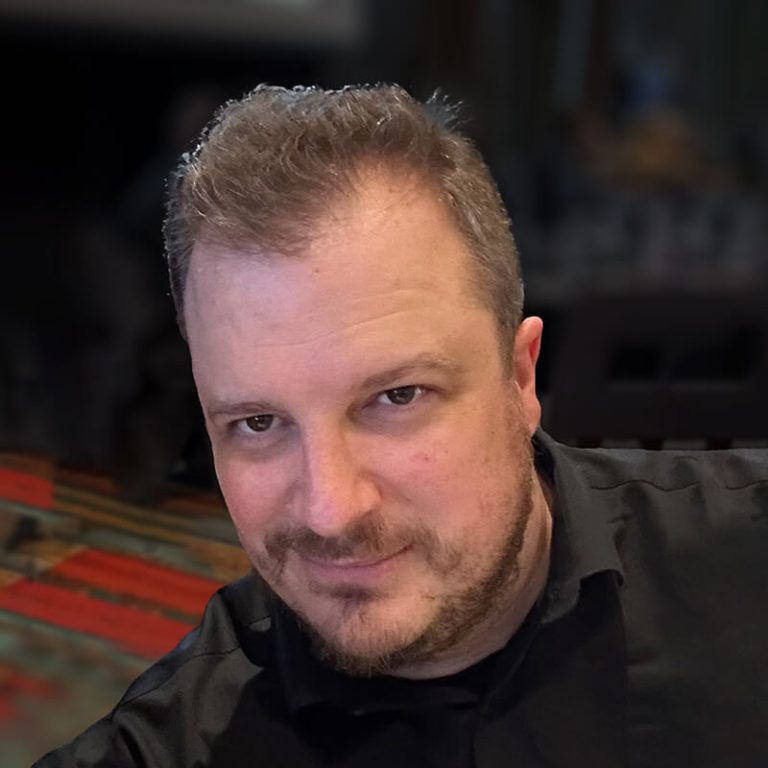Chris Abbs
Safety & Training Manager
B&K Enterprises
“
Health and safety professionals have created somewhat of a brother/sisterhood, and we are willing to lend a hand, even to our direct competition, in the name of saving lives.
”

National Work Zone Awareness Week
Safety & Training Manager
B&K Enterprises
“
Health and safety professionals have created somewhat of a brother/sisterhood, and we are willing to lend a hand, even to our direct competition, in the name of saving lives.
”

My career in safety started in the U.S. Navy while I was aboard ship. Safety was not an option, but a necessity in the nuclear program. My career in the heavy/highway side of safety started in 2011 while working at a traffic control company as part of the quality assurance team.
In 2015, I started at B&K Enterprises in the field as a laborer on the sign structure line of business. While out in the field, I saw an opening to create and provide a stronger safety program for the company. I took the initiative to pull my ideas together and gave a presentation to the leadership team. They decided to give me the opportunity, even without a formal degree, but based on my experience and understanding. I’ve continued to grow in my role here at B&K, expanding into the Director of H.R. and Safety.
I’m seeing overall workplace safety evolve in the eyes of both field personnel and management. With most contractors, you can see safety procedures being viewed as less of an obstacle and more of a helpful tool. I think the industry as a whole is adapting much better to new procedures and regulations, and I believe the networking of safety professionals has helped that adaptation.
I have noticed more and more contractors recognizing the importance of a strong safety program. I also see more buy-in from upper management of many construction companies, both big and small. Health and safety professionals have created somewhat of a brother/sisterhood, and we are willing to lend a hand, even to our direct competition, in the name of saving lives.
Within a month of accepting a safety position, we had a major work zone accident. A drunk driver entered a live pattern on a nearby interstate and struck two of our employees, narrowly missing several others. They were lucky to escape with relatively minor injuries. It was a coincidence that it happened during NWZAW, but it changed my viewpoint dramatically.
I knew from that point that B&K would be a strong promoter of this week, and would get the word out to everyone we could. We continue that to this day in person and on social media. There’s no way to correct every bad or inebriated driver, but if we could convince even one to drive safer around the orange, I’d still call it a victory.
Training and retraining employees regularly have been huge. One of the biggest things we try to get across to our employees is how much you can trust the average motorist in a work zone (spoiler alert: the answer is ‘not at all’). It’s unfortunate, but it means that we need to constantly look out for ourselves and each other. It’s also important to practice what we preach, and not become one of the hazards ourselves.
I joined the committee shortly after taking the safety role, having already heard that CAWP was a great resource for contractors. The Safety & Risk Committee has been valuable in ways that I can’t even begin to explain. Being able to connect with safety professionals in this industry has helped me expand my knowledge greatly.
Often, if the company or I had a safety issue, there is someone on the committee that already has a workable solution. I take pride in being a part of this committee. Even though I am over an hour away from their offices, I enjoy attending their meetings and events as often as I can.
I would like to see lifesaving technology expand even more. In my time in safety, I’ve seen great improvements in certain areas (i.e. lanyards, respirators, new PPE). Being a barrier company, we are the ones who currently provide the best protection against traffic hazards for highway workers. We combat tons of high-speed steel and aluminum with our own anchored steel and concrete, but when we are out setting or removing the barrier, our workers are mainly protected by bright pieces of rubber and plastic. I don’t know what worker protection from vehicles will look like in the future, but I would love to be a part of helping create it.
I could advise at least a hundred things, but I’ll stick to big ones:

2022 Go Orange Day- B&K Enterprises

2021 Go Orange Day- B&K Enterprises